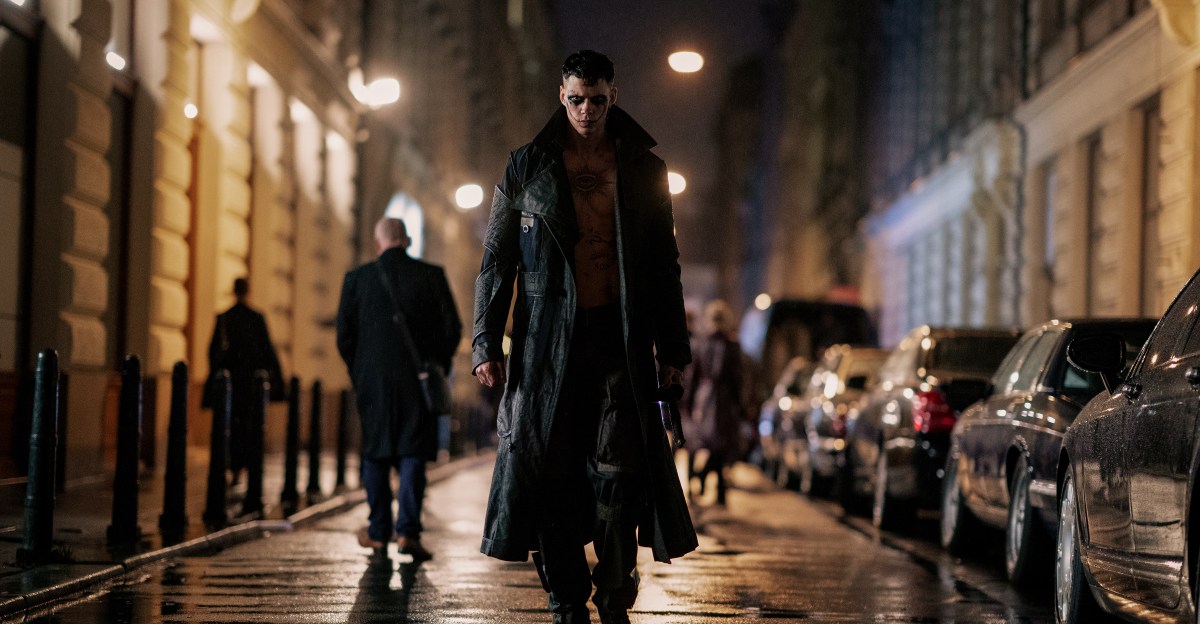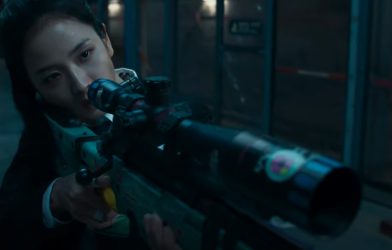Adapting The Crow again is a daunting task.
Director Alex Proyas famously adapted James O’Barr’s comic book series in 1994. His movie became a cult classic due to its moody, gothic tone and the unforgettable performance of star Brandon Lee, who died during filming due to a mishap involving a prop gun.
Three sequels followed the 1994 movie, but none found the original movie’s box-office success or long-lasting legacy. Thirty years later, we have a new version of The Crow — not a reboot or remake of the first movie, but a new adaptation of O’Barr’s comic.
The Crow (2024) has been in development since 2008, with a variety of directors and stars attached at various times. Blade director Stephen Norrington was originally slated to take on the project, while Bradley Cooper, Luke Evans, and Jason Momoa were each at one point lined up to play protagonist Eric.
After more than a decade in development, The Crow found its final combination: director Rupert Sanders and star Bill Skarsgård. Sanders is no stranger to adaptation — his previous films Snow White and the Huntsman, the 2017 live-action Ghost in the Shell, and even his television pilot for Foundation have all been adapted from prior works. (“It’s kind of annoying, to be honest,” he tells Polygon, saying he has 20 to 30 original projects he wants to get off the ground.) And Skarsgård is no stranger to makeup-heavy physical performances: He’s perhaps best known for playing Pennywise the Clown in Andy Muschietti’s It movies.
Sanders, a longtime fan of both O’Barr’s comic book and the Proyas movie, wanted to put his own spin on the source material. He pushes back against the idea that this project came with more pressure than any of his others: He says making any film is “daunting,” because “you’re still having to investigate the world in the same way.”
“I love the edginess of [this story],” he says. “I love the youth-culture side of it. I love the music [of the 1994 movie]. I love the kind of goth-Gothic movie, the kind of fabled myth, horror elements to it. I felt there was a version, an adaptation and a re-imagination, that would be very contemporary, and that there were themes that were in there that could be pushed further for today’s audience.”
His desire to contemporize The Crow shows up in the radically different design of Skarsgård as Eric: Sanders eschews the heavy white-and-black makeup Brandon Lee wore in the 1994 movie. Instead, Skarsgård’s Eric is heavily tattooed, with lighter touches of black makeup to meet Sanders’ vision for a “more grounded” version of this story, with a character design he says was inspired by what was around him when he grew up — specifically, England’s rave scene in the ’90s and the New Age travellers.
“I think what we were wearing in the ’90s is essentially what kids are wearing nowadays,” Sanders explains. “Eric is like a graffiti-writing street kid who has tattooed himself to push people away. I didn’t feel like the character put on white face makeup, because ours isn’t as stylized as the original. I think it worked in the black-and-white lines of the comic. The original [movie] was very theatrical and staged in this kind of miniature world. But our world was a bit more grounded.
“I think people at first were like, ‘Oh my God, what have they done to The Crow?’” he says. “It’s like the Batman costume. Christian Bale didn’t just step into Michael Keaton’s Batman costume and go ‘Sweet, I got this.’ And the Superman wardrobes, none of them have been [the same], they’re always a development. I acknowledge [this adaptation is] very different. It’s drawn on personal experience, and it’s drawn on conversations between Bill and I creating a character. And I think it works for Bill, and it works for the movie.”
A different take on romance
Eric’s design isn’t the only significant change in this version of The Crow. The role of his love interest Shelly (played by musician FKA Twigs) is quite different in Sanders’ movie. After meeting in a rehab facility, the two instantly strike up a bond over their shared isolation and deep sadness. When the demons of Shelly’s past catch up with her at the facility, the agents of an evil crime lord (Danny Huston) find her and kill both of the young lovers. Eric comes back to life as an avatar of vengeance, and he is promised that if he kills all of the people responsible for their murders, Shelly will return to life.
Sanders particularly wanted to stress the beauty in Eric and Shelly’s tragic romance, rather than quickly moving on to the quest for revenge.
“It’s kind of like two movies, in a way,” he says. “People were like, Oh no, he’s got to become The Crow in like, page 10. And I’m like, No, he doesn’t. I really fought for that half of the movie, because, to me, it’s like a cool kind of Romeo and Juliet meets, you know, Larry Clark’s Kids. It’s the streetwise kids who are broken and find each other. And there was something really beautiful in that, and really important to his journey.”
Sanders also felt society has a different understanding of criminality now than it did 30 years ago, and he wanted that reflected in the inciting incident that causes Eric’s revenge spree.
“The original Shelly is a kind of a flashback. She’s never there in flesh and blood,” he says. “It’s cold. You killed her, I kill you all, hundreds of you. And I didn’t really feel that was timely. I felt that we’re a bit more understanding of why people are criminals, and why people are in gangs. [The comic’s narrative] felt just a bit bleak, and so I felt the big thing was that Shelly needs to be the engine of the movie. She is the one he falls in love with. She needs to be the beating heart of the movie.”
The action design of 2024’s The Crow also stands in stark contrast to the 1994 movie — it’s a different kind of gory, thanks in part to technological advances in CGI and the influences of modern action franchises like the John Wick movies.
But the nature of Eric’s powers also creates a potential problem for action sequences: As long his love “remains pure,” he cannot die, no matter how many times he is shot or stabbed. How do you create tension in sequences where the audience isn’t afraid for the protagonist’s life?
Turns out, the answer is pain. “Are we emotionally connected to him if there’s no kind of suffering?” stunt coordinator Adam Horton tells Polygon. “I think that was the key word. He might not be able to die, but he’s suffering. He feels everything that he’s going through in the journey. We wanted to push the envelope of being not a slasher, but painful.”
Finding a new Crow fandom
Sanders’ hope is that this new Crow, while not specifically designed for teenagers, can find a new young audience that isn’t familiar with the first movie. He feels the core of the story is timeless: The tone and the story about tragic young lovers still resonates.
“There’s something about the comfort of melancholy,” he says. “I think that sentiment is going to be with teenagers throughout time. That’s how we did the soundtrack. I wanted to build some of the music from [the late ’80s, early ’90s], but also, [using] people who are making music about the same heartache now as they were then. And I think there’s a really good throughline in the kind of the goth culture, or the emo culture, whatever you want to call it, that is still as present now as it was then.”
Sanders understands why longtime fans might be concerned about his new vision for the franchise — after all, he’s a fan too. But he maintains that a new version of The Crow can only help the visibility of other versions.
“I think the people who are concerned, and rightly so, are the people who grew up with it. But the people who are 17 now aren’t going back and watching that movie,” he says. “So for them to see this movie, I think, will give them a reason to go back and look back at that movie. I think it’s a win-win for everyone, really. ”
Horton agrees, saying a straight imitation of Proyas’s adaptation would be “paying disrespect” to the people who made it, because it was “amazing” and shouldn’t be copied.
“Leave that one alone, and […] really make [this one] different,” he says. “How do we make the audience and [the people who] made that movie in that time proud?”
“I hope that in 30 years’ time — I hope it doesn’t take that long – maybe in 10 years’ time, they’re all going, There’s only one Bill Skarsgård,” Sanders says.
“No one’s dug a big hole and thrown that cult movie in it, where no one can ever see it again,” Sanders says. “We haven’t recorded over their VHS. It’s still there.”
The Crow is in theaters now.













